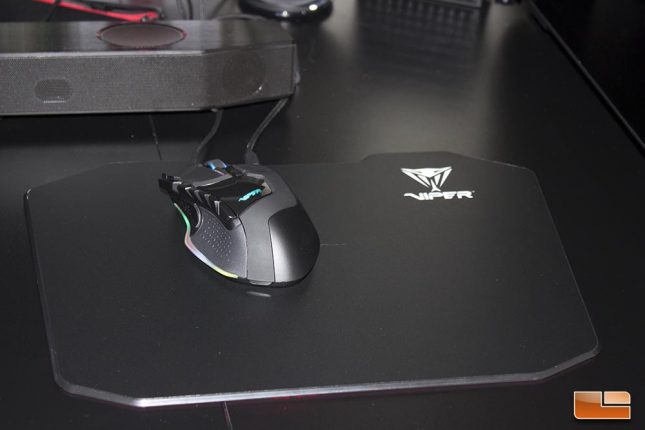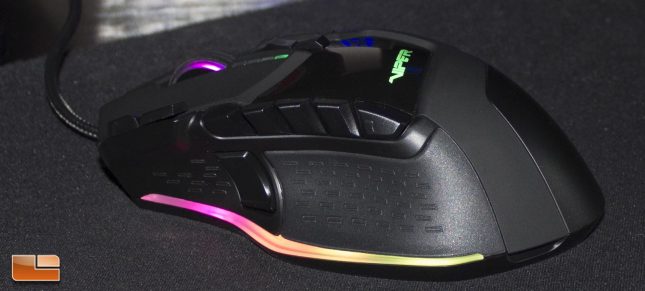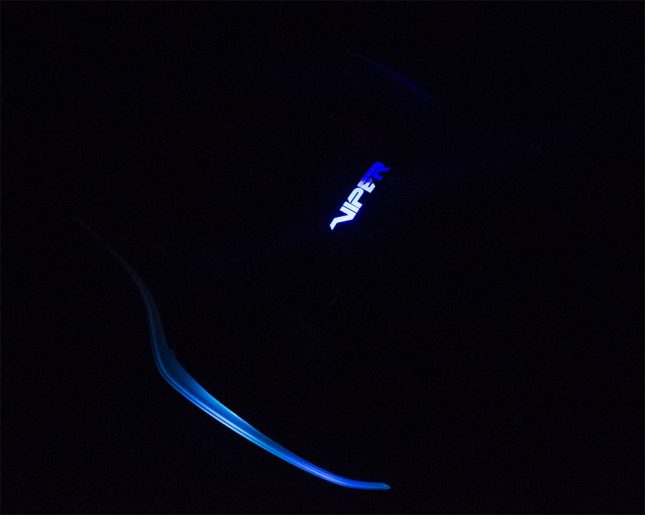Patriot Viper V570 RGB Blackout Gaming Mouse Review
Viper V570 RGB Blackout Edition Laser Gaming Mouse – How Does It Stack Up?
I’m really close to recommending the Viper V570 RGB Blackout, but there are just some things holding it back that keep me from putting this mouse in the buy column. Now that Viper got rid of the red accents on the V570 RGB and blacked the mouse out, it looks a lot better and will fit in on a lot more desktops than it would have before. The V570 RGB Blackout has got a unique look and the RGB effects, while limited, are done pretty darn nicely.
Each LED zone is customizable with either static or breathing colors and Viper has done an excellent job with LED implementation, with no dark Viper went with some decent quality Omron 10 million click switches for the main buttons and they felt responsive, though my right click was somewhat spongy.
The V570 RGB Blackout is a really comfortable mouse, with the thumb grip having a really nice resting area. I was able to use the V570 RGB Blackout for hours and never had any issues with comfort, despite the higher weight of the unit being kind of a hindrance. I really liked the ceramic feet on the V570 RGB Blackout, which let the mouse slide like a dream on various surfaces, while not giving it too loose or flighty of a feeling. I want to see these feet on more mice, they are awesome. So, with all of these positives, what’s the issue?
The laser sensor on the V570 RGB Blackout is where it really suffers. I could do a pixel-by-pixel test where I slowly moved the mouse and noticed that the Avago sensor in the V570 RGB just wasn’t picking my movement up like Pixart 3360 and 3366-based mice do. The Viper V570 RGB Blackout also spun out on me a couple of times during one night of testing where I aggressively tried to move my mouse on a cloth mouse pad in Quake. Spinning out is where the sensor loses itself and can’t determine location, so your player is left looking straight up or down. When I test mice, I am intentionally trying to spin them out by using aggressive mouse movement. I wasn’t able to get any optical mice I recently reviewed to spin out at all during various in-game testing. My advice is that if you are going to use a laser sensor, use a hard surface mouse pad. My experience with soft cloth was not a good one and I had my best results when using Viper’s own LED Gaming Mouse Pad, which I recently reviewed.
The size of the Viper V570 RGB Blackout makes it a bit less nimble and hard to maneuver than the gaming mice I’ve been testing as of late. The braided cable looks good, but a lighter option would have allowed for more uninhibited movement, as I did find the braided cable had a bit of drag and wasn’t that flexible. These issues aren’t anything a mouse bungee can’t fix and my use of wireless mice as a daily driver makes cable drag a much more noticeable issue to me than it would somebody coming from another corded mouse.
If you are just a casual gamer and don’t need pixel perfect accuracy from your gaming mouse but want a lot of buttons and some cool lighting effects, the Viper V570 RGB Blackout Edition may be a good choice. For now, if you want a gaming mouse with a lot of buttons that tracks well and has decent ergonomics, I’d recommend the SteelSeries Rival 500 ($64.99 shipped), which has the industry-leading Pixart PMW3360 sensor. The Viper V570 RGB Blackout Edition is a solid mouse, but this is a competitive arena and Viper needs to make a few tweaks, most importantly to the sensor choice, to make this mouse a real winner. Right now, the Viper V570 RGB Blackout Edition is available at Amazon for $59.99 shipped.
Legit Bottom Line: The Viper V570 RGB Blackout Edition is a comfortable, versatile gaming mouse with a lot of buttons. The ceramic feet give the mouse a great gliding feel, too. While the heavier weight of the mouse being a downfall is subjective, the V570 RGB Blackout also has a laser sensor that doesn’t offer pixel-accurate tracking and I can’t recommend it to any serious PC gamers for that reason, alone.



